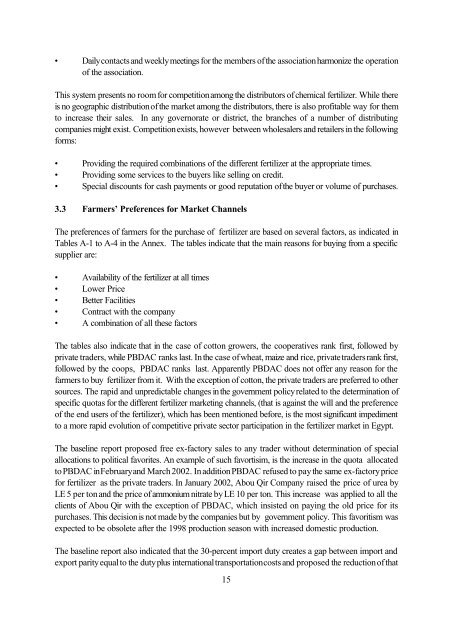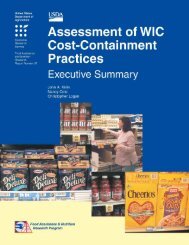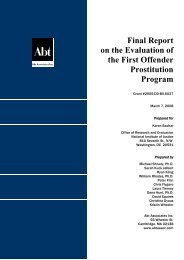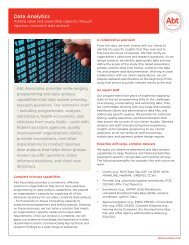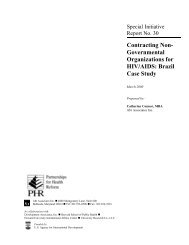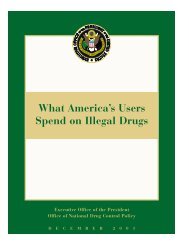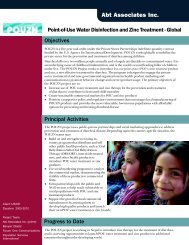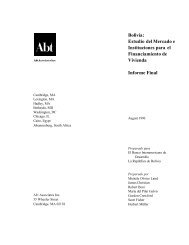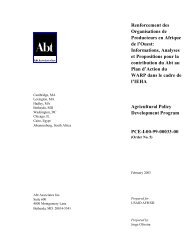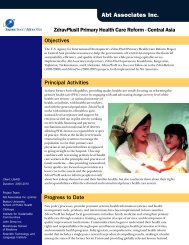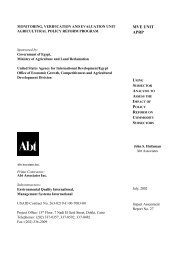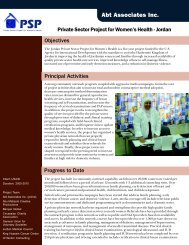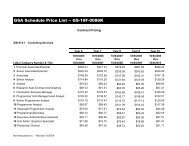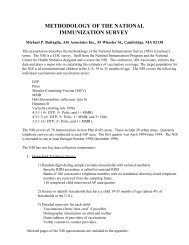Fertilizer Production And Marketing In Egypt ... - Abt Associates
Fertilizer Production And Marketing In Egypt ... - Abt Associates
Fertilizer Production And Marketing In Egypt ... - Abt Associates
You also want an ePaper? Increase the reach of your titles
YUMPU automatically turns print PDFs into web optimized ePapers that Google loves.
• Daily contacts and weekly meetings for the members of the association harmonize the operation<br />
of the association.<br />
This system presents no room for competition among the distributors of chemical fertilizer. While there<br />
is no geographic distribution of the market among the distributors, there is also profitable way for them<br />
to increase their sales. <strong>In</strong> any governorate or district, the branches of a number of distributing<br />
companies might exist. Competition exists, however between wholesalers and retailers in the following<br />
forms:<br />
• Providing the required combinations of the different fertilizer at the appropriate times.<br />
• Providing some services to the buyers like selling on credit.<br />
• Special discounts for cash payments or good reputation of the buyer or volume of purchases.<br />
3.3 Farmers’ Preferences for Market Channels<br />
The preferences of farmers for the purchase of fertilizer are based on several factors, as indicated in<br />
Tables A-1 to A-4 in the Annex. The tables indicate that the main reasons for buying from a specific<br />
supplier are:<br />
• Availability of the fertilizer at all times<br />
• Lower Price<br />
• Better Facilities<br />
• Contract with the company<br />
• A combination of all these factors<br />
The tables also indicate that in the case of cotton growers, the cooperatives rank first, followed by<br />
private traders, while PBDAC ranks last. <strong>In</strong> the case of wheat, maize and rice, private traders rank first,<br />
followed by the coops, PBDAC ranks last. Apparently PBDAC does not offer any reason for the<br />
farmers to buy fertilizer from it. With the exception of cotton, the private traders are preferred to other<br />
sources. The rapid and unpredictable changes in the government policy related to the determination of<br />
specific quotas for the different fertilizer marketing channels, (that is against the will and the preference<br />
of the end users of the fertilizer), which has been mentioned before, is the most significant impediment<br />
to a more rapid evolution of competitive private sector participation in the fertilizer market in <strong>Egypt</strong>.<br />
The baseline report proposed free ex-factory sales to any trader without determination of special<br />
allocations to political favorites. An example of such favortisim, is the increase in the quota allocated<br />
to PBDAC in February and March 2002. <strong>In</strong> addition PBDAC refused to pay the same ex-factory price<br />
for fertilizer as the private traders. <strong>In</strong> January 2002, Abou Qir Company raised the price of urea by<br />
LE 5 per ton and the price of ammonium nitrate by LE 10 per ton. This increase was applied to all the<br />
clients of Abou Qir with the exception of PBDAC, which insisted on paying the old price for its<br />
purchases. This decision is not made by the companies but by government policy. This favoritism was<br />
expected to be obsolete after the 1998 production season with increased domestic production.<br />
The baseline report also indicated that the 30-percent import duty creates a gap between import and<br />
export parity equal to the duty plus international transportation costs and proposed the reduction of that<br />
15


